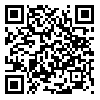BibTeX | RIS | EndNote | Medlars | ProCite | Reference Manager | RefWorks
Send citation to:
URL: http://frooyesh.ir/article-1-6130-en.html
2- Professor, Department of Psychology, Faculty of Educational Sciences and Psychology, Mohaghegh Ardabili University, Ardabil, Iran.
The present study aimed to model the causality of adolescent externalizing problems based on childhood trauma and the mediating role of insecure attachment styles. The research method was descriptive-correlational structural equation modeling. The statistical population of this study included adolescent girls and boys aged 14 to 18 years in Mashhad in 2023-2024, from which 631 people were selected as samples using the convenience method. The data collection tools were the Externalizing Problems Inventory (WPI; Woodworth, 1920), the Attachment Scale (RAAS; Collins & Reed, 1990) and the Childhood Trauma Questionnaire (CTQ; Bernstein et al., 2003). Structural equation analysis was used to analyze the data. The results of the study showed that the conceptual model had a good fit. Also, childhood trauma and insecure attachment styles had a significant direct effect on adolescents' externalizing problems (p<0.01). In addition, the results of the bootstrap test also showed that insecure attachment styles had a significant mediating role in the relationship between childhood trauma and externalizing problems (p<0.01). The results of the study make it necessary to examine and pay more attention to childhood trauma and insecure attachment styles in preventive programs aimed at preventing the occurrence of externalizing problems in adolescents.
Received: 2025/03/26 | Accepted: 2025/05/18 | ePublished: 2025/10/2
| Rights and permissions | |
 |
This work is licensed under a Creative Commons Attribution-NonCommercial 4.0 International License. |





